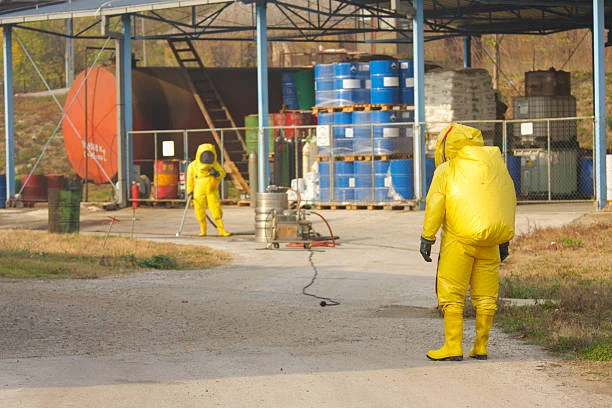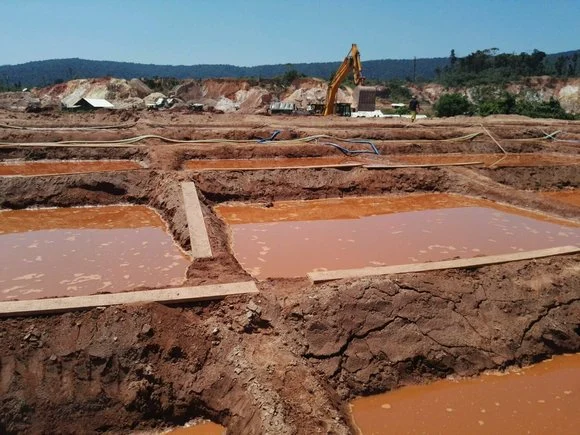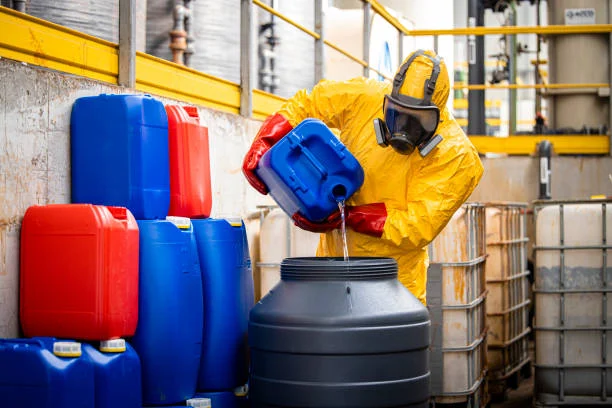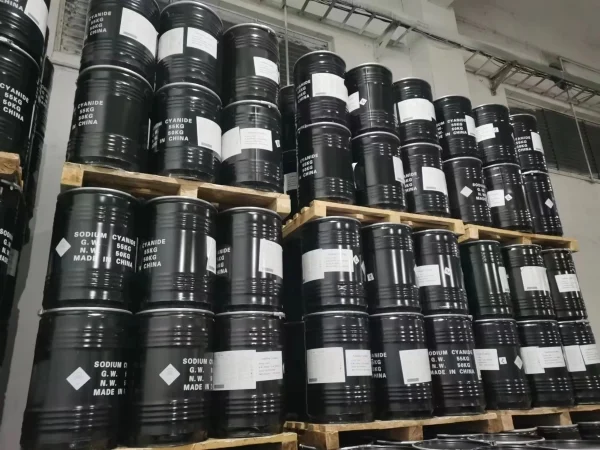
Sodium cyanide, as an important chemical raw material widely used in numerous industrial fields, is highly toxic. If not handled properly during use, it can easily lead to serious safety accidents, posing a huge threat to the safety of people's lives and the environment. Therefore, it is crucial to strictly follow the safe use guidelines and effectively prevent risks in Industrial Applications.
Understanding the Characteristics and Hazards of Sodium Cyanide
Sodium cyanide (NaCN) is a white crystalline granule or powder, which is prone to deliquescence and has a faint bitter almond odor. It is easily soluble in water, and its aqueous solution is strongly alkaline. Sodium cyanide is extremely toxic. Once it enters the human body, it will rapidly dissociate into cyanide ions (CN⁻). Cyanide ions can combine with the iron ions in cytochrome oxidase, interrupting the cell respiration chain, preventing cells from absorbing and utilizing oxygen, and thus causing tissue hypoxia in the human body. In severe cases, it can lead to death within a short period. At the same time, Sodium Cyanide also poses a great threat to the environment. If it leaks into water bodies, it will cause a devastating blow to aquatic organisms and disrupt the ecological balance.
Risk Analysis in Industrial Application Scenarios
In the gold mining industry, sodium cyanide is often used to extract gold from ores. During this process, if equipment such as ore leaching tanks and pipelines is not tightly sealed, Sodium cyanide solution may leak. Moreover, during the gold displacement process, operators frequently come into contact with solutions containing sodium cyanide, and there is a risk of accidental inhalation or skin contact. In the electroplating industry, sodium cyanide, as one of the components of the electroplating solution, can make the coating more uniform and firm. However, improper maintenance of the electroplating tank, such as corrosion and perforation of the tank body, will cause the leakage of sodium cyanide solution. Meanwhile, when the ventilation in the electroplating workshop is poor, the cyanide-containing gas that volatilizes may accumulate in the workshop, threatening the health of workers.
Safety Measures for the Storage Stage
The storage facilities for sodium cyanide must meet strict safety standards. The warehouse should be located in an area with a relatively high terrain, dry, well-ventilated, and far away from residential areas, water sources, and major traffic routes. The warehouse building should have the functions of fire prevention, explosion prevention, and leakage prevention. The floor should be paved with impermeable and corrosion-resistant materials, and a containment dike should be set up to prevent the spread of leaked sodium cyanide. Special corrosion-resistant steel cylinders or sealed plastic barrels should be selected as storage containers, and the integrity of the containers should be checked regularly to ensure there is no damage or leakage. A hydrogen cyanide gas detection and alarm device should be installed in the warehouse. Once sodium cyanide leaks and generates hydrogen cyanide gas, it can promptly issue an alarm. At the same time, the double-person, double-lock management system should be strictly implemented. Only two authorized personnel present at the same time can open the warehouse to prevent the theft and misuse of sodium cyanide.
Risk Prevention and Control During the Transportation Process
The Transportation of sodium cyanide should be carried out by professional hazardous chemical transportation enterprises. The transportation vehicles must have the qualification for transporting hazardous chemicals, be equipped with devices for fire prevention, explosion prevention, and leakage prevention, and be equipped with a satellite positioning system to enable real-time monitoring of the transportation route. The transportation personnel must undergo strict professional training, obtain the corresponding qualification certificates, and be familiar with the properties, hazards, and emergency treatment methods of sodium cyanide. Before loading sodium cyanide, the condition of the transportation container and the vehicle should be carefully checked to ensure there are no potential safety hazards. During the transportation process, the vehicle should travel along the specified route and avoid stopping in sensitive areas such as densely populated areas and water source protection areas. At the same time, the transportation vehicle should be equipped with necessary emergency rescue equipment, such as personal protective equipment, leakage control tools, and first aid medications.
Standard Requirements for Usage Operations
In industrial production workshops, strict operating procedures must be established. Before using sodium cyanide, operators should wear a full set of personal protective equipment, including protective clothing, protective gloves, protective goggles, and gas masks. During the operation, the usage amount of sodium cyanide should be strictly controlled, and it should be accurately weighed according to the process requirements to avoid excessive use. When adding sodium cyanide to the reaction equipment, a closed feeding method should be adopted to prevent dust from flying or the solution from splashing out. The production equipment should be regularly maintained, and the tightness of parts such as pipelines, valves, and joints should be checked. Aging and damaged parts should be repaired or replaced in a timely manner. The workshop should maintain good ventilation, and a ventilation and air exchange system should be installed to ensure that the concentration of hydrogen cyanide gas in the air is lower than the occupational exposure limit specified by the state.
Emergency Response Plans and Drills
Enterprises should formulate comprehensive emergency response plans for accidents such as sodium cyanide leakage and poisoning. The plan should clearly define the emergency organization structure and division of responsibilities, and specify the accident reporting procedures, emergency response levels, and disposal measures. At the same time, sufficient emergency rescue materials, such as adsorbents, neutralizers, and antidote medications, should be equipped. Regularly organize employees to conduct emergency drills, simulating accident situations in different scenarios, so that employees are familiar with the emergency response procedures and improve their emergency response capabilities and collaborative cooperation abilities. After the drill, the emergency response plan and the drill effect should be evaluated, experience and lessons should be summarized, and the plan should be revised and improved in a timely manner.
In industrial applications, the safe use of sodium cyanide requires strict control in all aspects, including storage, transportation, and usage operations. By strengthening the awareness of Risk Prevention and implementing various safety measures, we can effectively avoid accidents and ensure the safety of people and the environment.
- Random Content
- Hot content
- Hot review content
- Zinc Sulfate Industrial Grade 22%-35%
- Powdery emulsion explosive
- High-precision Delay Element( 25ms- 10000ms)
- 99.5% min Ammonium Chloride For Industrial Use
- Sodium Persulfate,Sodium Persulphate,supplier 99.00%
- Potassium borohydride
- Barium carbonate 99% powder
- 1Discounted Sodium Cyanide (CAS: 143-33-9) for Mining - High Quality & Competitive Pricing
- 2China's New Regulations on Sodium Cyanide Exports and Guidance for International Buyers
- 3Sodium Cyanide 98% CAS 143-33-9 gold dressing agent Essential for Mining and Chemical Industries
- 4International Cyanide(Sodium cyanide) Management Code - Gold Mine Acceptance Standards
- 5China factory Sulfuric Acid 98%
- 6Anhydrous Oxalic acid 99.6% Industrial Grade
- 7Oxalic acid for mining 99.6%
- 1Sodium Cyanide 98% CAS 143-33-9 gold dressing agent Essential for Mining and Chemical Industries
- 2High Quality 99% Purity of Cyanuric chloride ISO 9001:2005 REACH Verified Producer
- 3Zinc chloride ZnCl2 for High Molecular Weight Polymers Initiator
- 4High Purity · Stable Performance · Higher Recovery — sodium cyanide for modern gold leaching
- 5High Quality Sodium Ferrocyanide / Sodium Hexacyanoferr
- 6Gold Ore Dressing Agent Safe Gold Extracting Agent Replace Sodium Cyanide
- 7Sodium Cyanide 98%+ CAS 143-33-9











Online message consultation
Add comment: